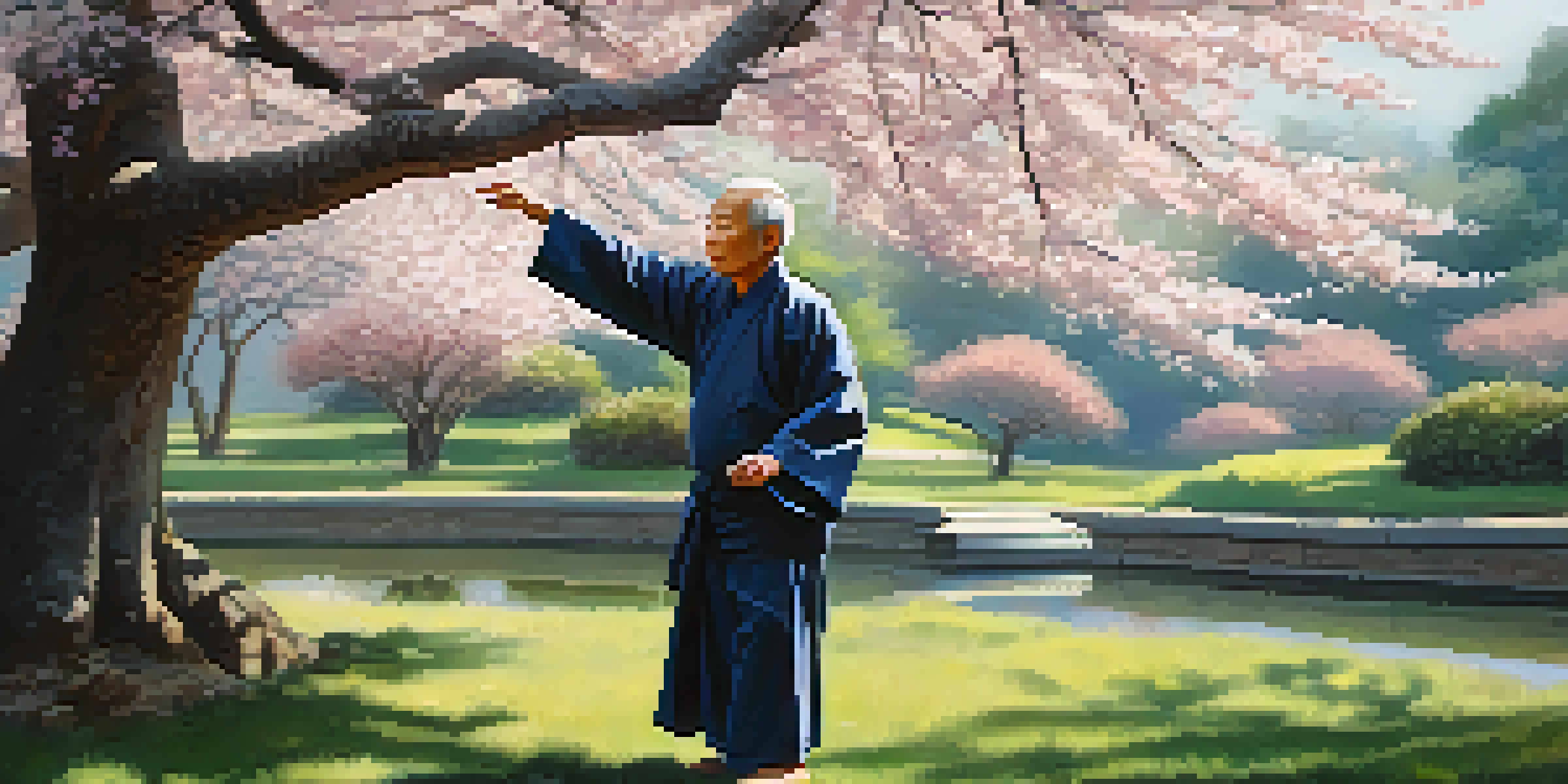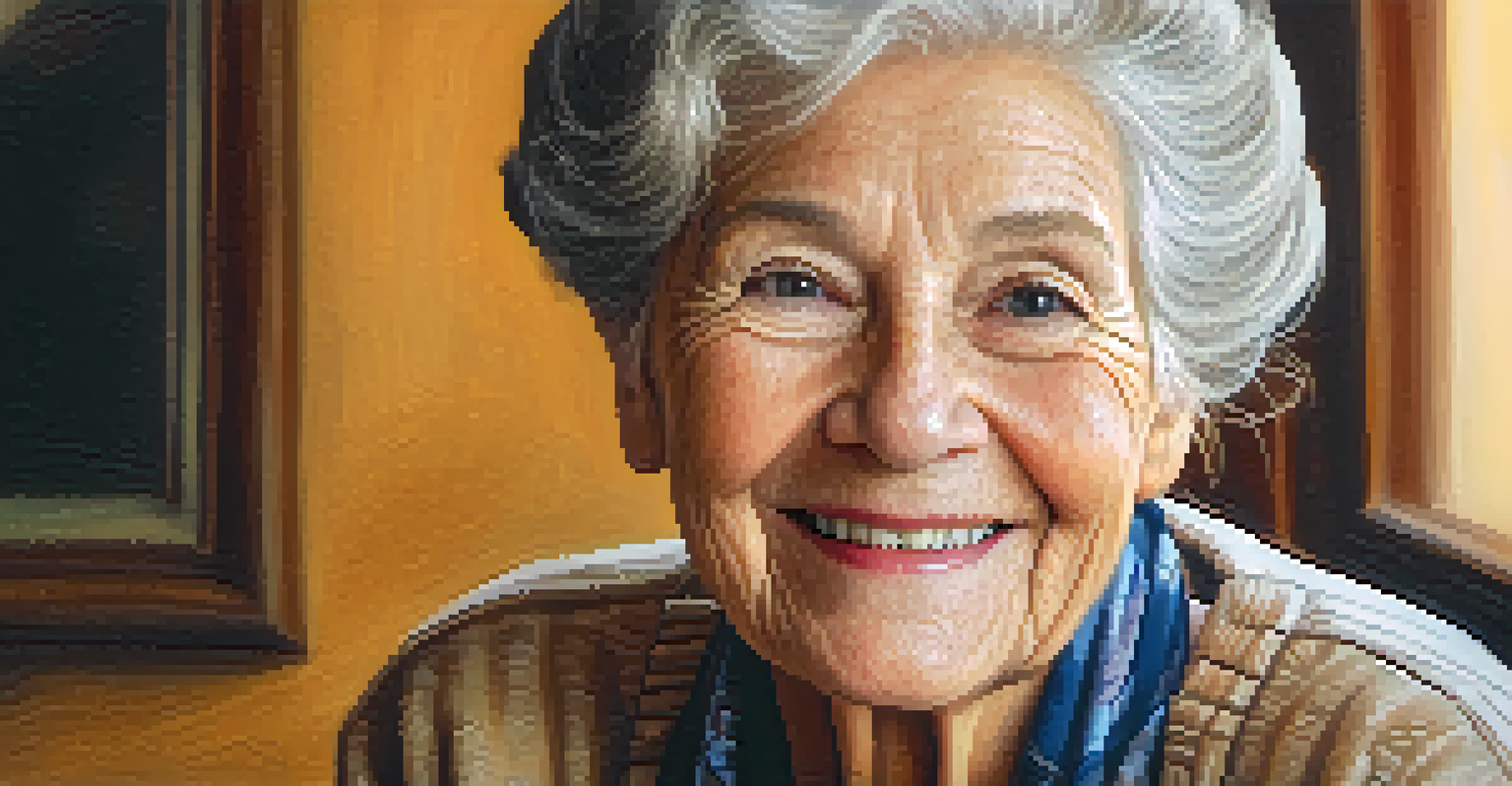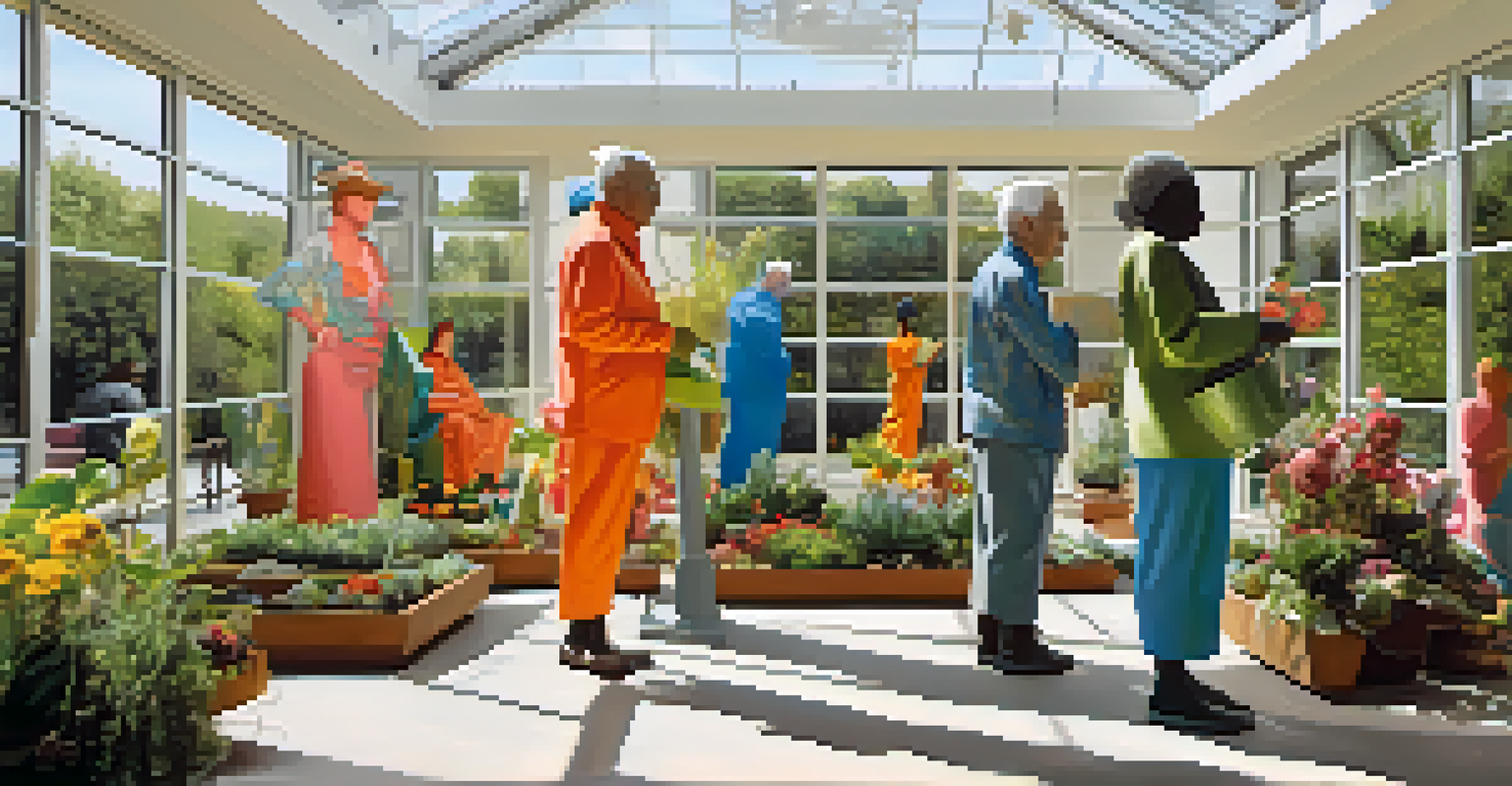Artistic Depictions of Aging: The Body Through Time

The Historical Perspective on Aging in Art
Throughout history, artists have portrayed aging as a natural part of life. From ancient sculptures to Renaissance paintings, the depiction of older individuals reflects societal attitudes toward aging. For instance, the classical Greeks often celebrated the wisdom of the elderly, illustrating them with dignity and grace.
Aging is not lost youth but a new stage of opportunity and strength.
In contrast, during the Middle Ages, aging was sometimes associated with decay and death, as seen in various religious artworks. This shift highlights how cultural narratives shape our understanding of aging. As we analyze these works, we can see how the portrayal of the elderly has evolved alongside changing societal values.
Overall, the historical perspective shows us that artistic depictions of aging are not just about physical appearance but also about the evolving perception of the elderly in society.
Symbolism of Aging in Different Cultures
Aging carries different meanings across cultures, and this is vividly expressed in art. In some Eastern traditions, aging is revered, embodying wisdom and spiritual growth, as seen in the works of Chinese ink painters. These artworks often portray elderly figures in serene landscapes, emphasizing harmony and respect for nature.

Conversely, in Western art, aging can sometimes evoke a sense of melancholy or loss. Think of the haunting portraits of old age by artists like Rembrandt, where the wrinkled faces tell stories of life's struggles. This cultural dichotomy showcases how artists interpret aging through the lens of their own societal values.
Art Reflects Evolving Aging Views
Throughout history, artistic portrayals of aging have shifted, reflecting changing societal attitudes towards the elderly.
By exploring these cultural representations, we gain a deeper appreciation for how aging is celebrated and critiqued worldwide, reminding us that there is beauty in every stage of life.
Modern Art's Challenge to Aging Stereotypes
Modern artists often challenge the traditional stereotypes associated with aging, presenting a more nuanced view of the elderly. For instance, contemporary photographers may capture vibrant images of older adults engaging in dynamic activities, shattering the notion that aging equates to inactivity. This fresh perspective invites viewers to reconsider their preconceptions about the aging process.
We don’t stop playing because we grow old; we grow old because we stop playing.
Installation artists, too, have explored themes of aging by incorporating interactive elements that engage audiences. These artworks often encourage discussions about the experiences of aging, bringing visibility to voices that are frequently marginalized in society. In this way, modern art acts as a platform for advocacy and awareness.
Ultimately, modern artistic expressions serve to empower older individuals, showcasing their vitality and resilience while redefining societal narratives surrounding aging.
The Role of Portraiture in Depicting Aging
Portraiture has long been a powerful medium for capturing the essence of aging. Artists like Lucian Freud have masterfully painted the human form in all its imperfections, highlighting the beauty of aging skin and the stories etched into each wrinkle. These portraits invite viewers to look beyond superficial beauty and appreciate the depth of human experience.
The emotional resonance of portraiture lies in its ability to connect the viewer with the subject's personal journey. As we gaze upon an aging face, we are often reminded of our own loved ones and the passage of time. This connection fosters empathy and understanding, encouraging us to honor the lives lived.
Cultural Interpretations of Aging
Different cultures celebrate aging in unique ways, with Eastern traditions often revering the elderly while Western art may evoke melancholy.
In essence, portraiture acts as a mirror, reflecting not only the physical changes of aging but also the inner lives and histories of individuals.
The Impact of Technology on Artistic Depictions of Aging
With advancements in technology, artists have found new ways to explore and depict aging. Digital art platforms allow for innovative approaches, enabling artists to manipulate images and create surreal representations of aging. This medium encourages experimentation, pushing the boundaries of traditional artistic conventions.
Moreover, technology has made art more accessible, allowing a broader audience to engage with themes of aging. Online exhibitions and social media platforms have fostered communities that celebrate the beauty and complexities of growing older. This democratization of art encourages diverse voices to share their experiences and perspectives on aging.
In this digital age, technology not only enhances artistic expression but also amplifies conversations about aging, making it a significant topic in contemporary art.
Art as a Tool for Aging Awareness and Advocacy
Art plays a crucial role in raising awareness about aging and advocating for the rights of older adults. Through various forms of expression, artists can highlight issues such as ageism, healthcare access, and social isolation. Documentaries and visual storytelling, for example, can shed light on the challenges faced by the elderly, prompting societal reflection and change.
Exhibitions focusing on aging can create safe spaces for dialogue, allowing artists and audiences to share their experiences and insights. This interaction can foster empathy and understanding, bridging generational divides. By addressing these themes, art can inspire action and promote a more inclusive society for all ages.
Modern Art Challenges Aging Stereotypes
Contemporary artists redefine aging by showcasing the vibrancy and resilience of older individuals, inviting viewers to rethink their perceptions.
In essence, art not only reflects societal issues related to aging but also serves as a catalyst for change, encouraging us to embrace and support the aging population.
Celebrating the Beauty of Aging in Contemporary Art
Contemporary art often celebrates the beauty of aging, showcasing the grace and wisdom that come with experience. Artists like Yayoi Kusama use vibrant colors and patterns to depict the joy of living life fully, regardless of age. This positive portrayal challenges negative stereotypes and encourages a more inclusive understanding of aging.
Exhibitions that focus on aging can create a platform for older artists to share their unique perspectives and experiences. By amplifying these voices, the art world enriches its narrative and highlights the diverse contributions of individuals in their later years. This celebration of creativity and resilience fosters a sense of community and belonging.

Ultimately, contemporary art invites us to reframe our views on aging, encouraging us to see it not as a decline but as an opportunity for growth, creativity, and connection.